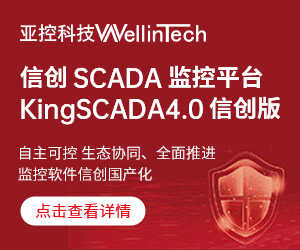Industrial Control systems can be divided into two categories控制工程网版权所有, those that are designed for general-purpose control functions and are fully programmable by the end user, and those designed for a special purpose控制工程网版权所有, such as controlling a milling machine or an injection molding system.
In the first categoryCONTROL ENGINEERING China版权所有, one typically finds PLCs and general-purpose industrial computers. The second category uses dedicated controllers with built-in support for special functions, such as closed-loop motion control. Both systems benefit from multitasking—the ability to perform more than one function at the same time—but dedicated controllers place special requirements on the operating system's coordination of concurrent tasks.
Where time-critical functions are involved, such as the control and coordination of multiple axes of motion, the operating system must guarantee that time critical signals from motion tracking sensors are not missed by the control application's critical threads. An operating system like Microsoft Windows cannot provide sufficient response guarantees to host such an application控制工程网版权所有, because it is optimized to provide services to a variety of general-purpose tasks, such as interaction with human operators, network interfaces, database engines控制工程网版权所有, etc.
This general-purpose aim does not bode well for the timing requirements of an industrial control application控制工程网版权所有, which requires a real-time operating system to guarantee the coordination of time-critical functions. But the highly specialized nature of a real-time operating system is also a severe limitation.
A general-purpose operating system like Microsoft Windows has many third-party tools available to shorten the time required to implement operator interface screens, access databases, and com
 用户中心
用户中心
-
 子站
子站 -
 技术
技术 -
 社区
社区
Software Virtualization Environment Enhances Control
www.cechina.cn2009.10.19阅读 5843
标签:Control,
版权声明:版权归控制工程网所有,转载请注明出处!
图说工控
更多+
燃情自动化——2017北京国际工业智能及自动化…
2017年05月18日
探秘“数字化工厂”
2016年07月18日
迈向工业4.0——西门子引领数字化企业进程
2016年07月18日
"智·变 赢未来",PHIIDF 2016燃情北京!
2016年06月01日ABB自动化世界2016闪耀武汉 展示“物联网+”领先…
2016年05月24日

 在线会议
在线会议 论坛
论坛 专题
专题 工控直播
工控直播 新闻中心
新闻中心 子站
子站 技术
技术 社区
社区


 剑维软件电子半导体行业白皮书有奖下载
剑维软件电子半导体行业白皮书有奖下载 魏德米勒麒麟系列产品赋能本土工业
魏德米勒麒麟系列产品赋能本土工业 Fluke 283 FC 智能万用表震撼来袭
Fluke 283 FC 智能万用表震撼来袭 SugonRI2.0工业编程平台免费有奖试用
SugonRI2.0工业编程平台免费有奖试用 IDEC HR8S系列新一代安全继电器有奖试用活动
IDEC HR8S系列新一代安全继电器有奖试用活动


















